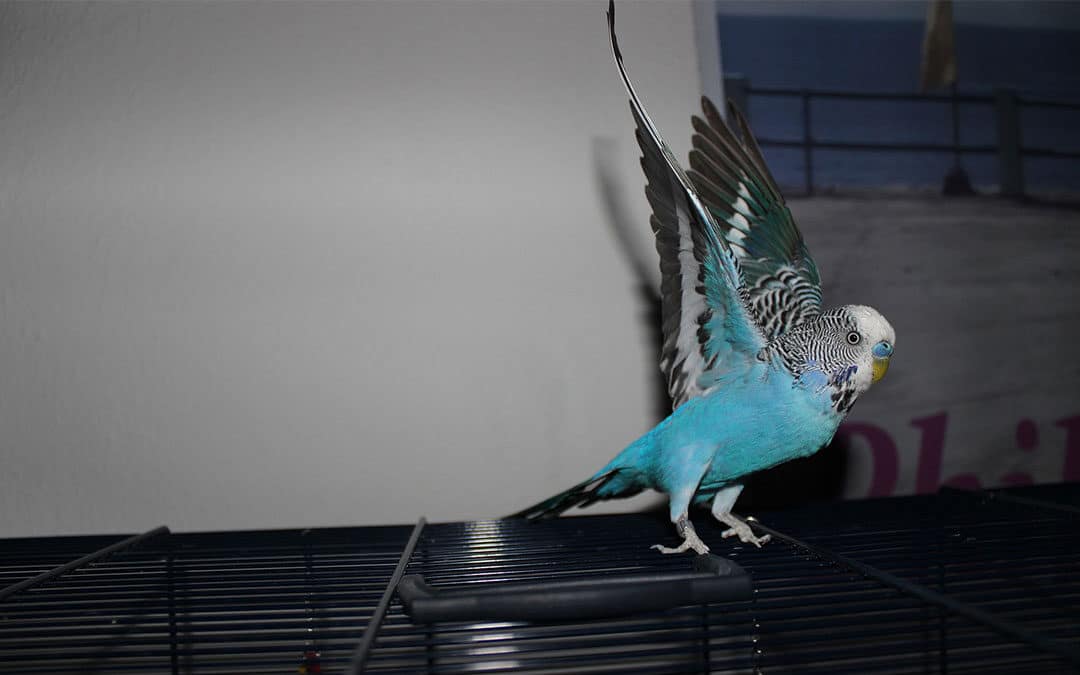Budgies are playful, social, and can be taught to talk and perform tricks.
However, understanding their behavior can be key to providing them with proper care and a happy home.
By observing their body language, listening to their vocalizations, and interacting with them, you can gain a deeper understanding of your budgie.
Body Language
One way to understand budgie behavior is by observing their body language.
For example, when a budgie is relaxed and content, it will have its feathers puffed out and be perched calmly.
On the other hand, if a budgie is frightened or stressed, it will have its feathers pressed against its body and may be moving around restlessly.
Additionally, a budgie may also use certain body language to communicate with other budgies or with their human companions.
For example, a budgie may bob its head up and down as a sign of affection or excitement.
Or, it may raise its crest feathers as a sign of aggression or territoriality.
It’s important to note that a budgie might also change its body language depending on the situation.
If a budgie is in a new environment, it might be more tense and fluffed up, but as it becomes more comfortable, it will start to relax and display more contented body language.
Paying attention to these changes in body language can give you an insight into how your budgie is feeling and what it needs
Vocalizations
Another way to understand budgie behavior is by listening to their vocalizations.
Budgies can make a variety of sounds, from tweets and chirps to whistles and even words and phrases.
Each sound can have a different meaning, such as a soft chirp to signal contentment, or a loud screech to signal distress.
As a pet owner, it’s important to familiarize yourself with the different vocalizations your budgie makes, and learn to interpret what they mean.
This will help you understand how your budgie is feeling and what it needs from you.
Budgies can also learn to mimic words and phrases, and may even learn to associate certain sounds with certain actions or behaviors.
For example, a budgie may learn to whistle a specific tune when it wants to be fed or when it wants to play.
It’s important to spend time talking to your budgie and encourage it to vocalize as this will strengthen the bond between you and your pet.
Additionally, it’s also important to be aware of the time of day when your budgie is most vocal, as it might indicate that it wants more attention or needs more socialization.
Interacting with Your Budgie
Interacting with your budgie is key to understanding its behavior and building a strong bond.
This can include spending time talking to it, training it to perform tricks, and providing it with interactive toys.
It’s also important to provide your budgie with plenty of socialization, with other budgies or through interaction with human companions.
Budgies are social animals and thrive on interaction, so it’s important to provide them with enough stimulation and companionship to keep them happy and healthy.
Interacting with your budgie can also include things like providing them with bird-safe toys and perches, or setting up a play area for them.
This can not only help to keep them physically active, but also mentally stimulated as they explore and play.
Additionally, providing your budgie with a variety of food options, such as seeds, fruits, and vegetables.
Can also help to keep them mentally and physically stimulated, as they work to forage for their food
Perfect home for your budgie
It’s also important to consider the environment in which your budgie lives. A cage that is too small or overcrowded can lead to stress and behavioral issues.
Budgies need room to fly and stretch their wings, so make sure the cage is big enough and provides adequate perches and toys.
Also, consider the location of the cage, as budgies need natural light and fresh air to thrive.
Avoid placing the cage in direct sunlight or drafts, and ensure that your budgie has access to sunlight and fresh air when outside its cage.
It’s important to get to know your budgie and understand its individual personality and needs.
This will help you create a nurturing environment that is tailored to your budgie’s specific needs and behaviors.
Conclusion
In conclusion, understanding your budgie’s behavior is crucial for providing them with proper care and a happy home.
By observing their body language, listening to their vocalizations, and interacting with them, you can gain insight into how your budgie is feeling and what it needs.
Additionally, providing your budgie with a stimulating environment, plenty of socialization, and a varied diet can also help to keep them happy and healthy.
Remember that each budgie is unique, and it’s important to get to know your pet’s individual personality and needs.
With proper understanding and care, your budgie can thrive and make a loving, fun-loving companion.




